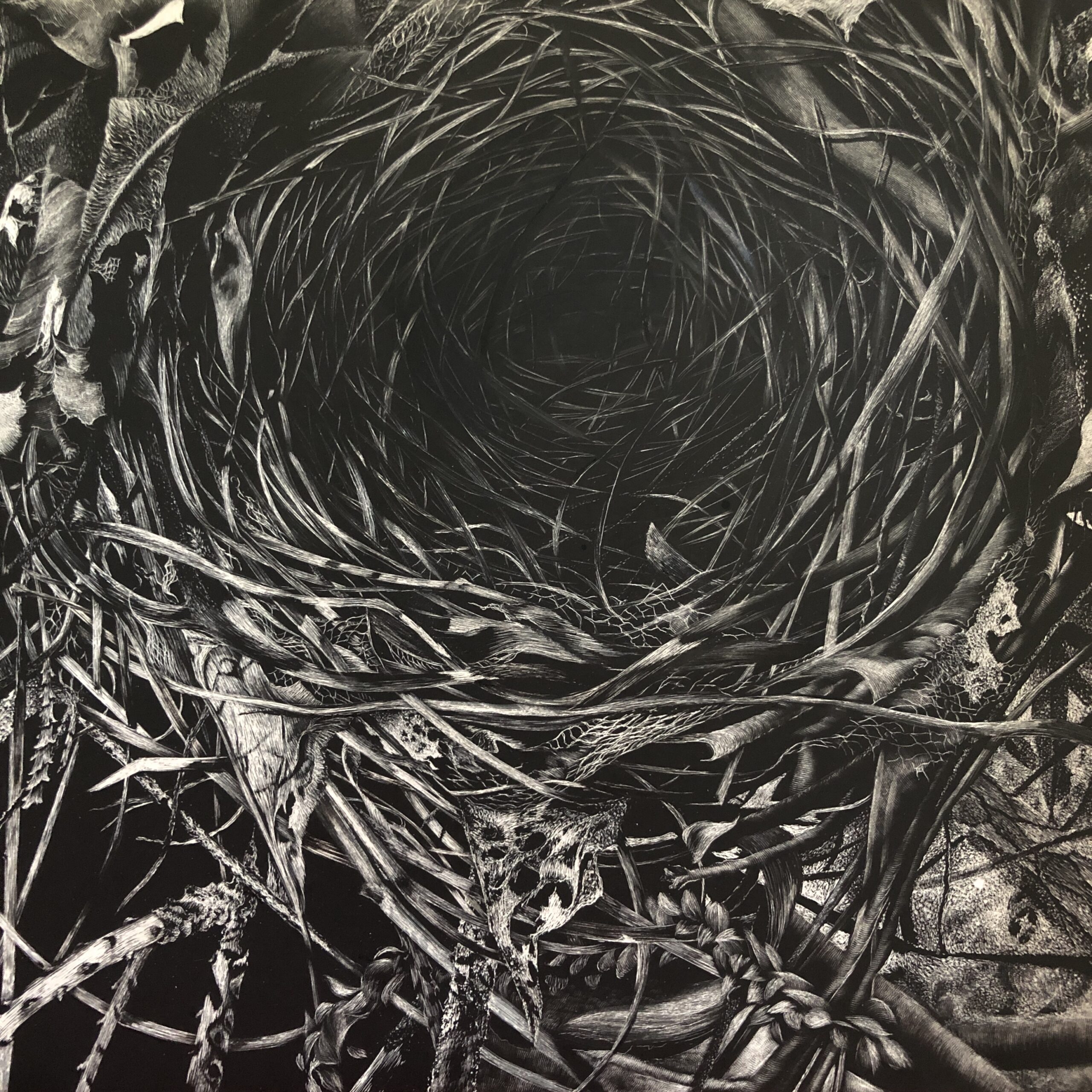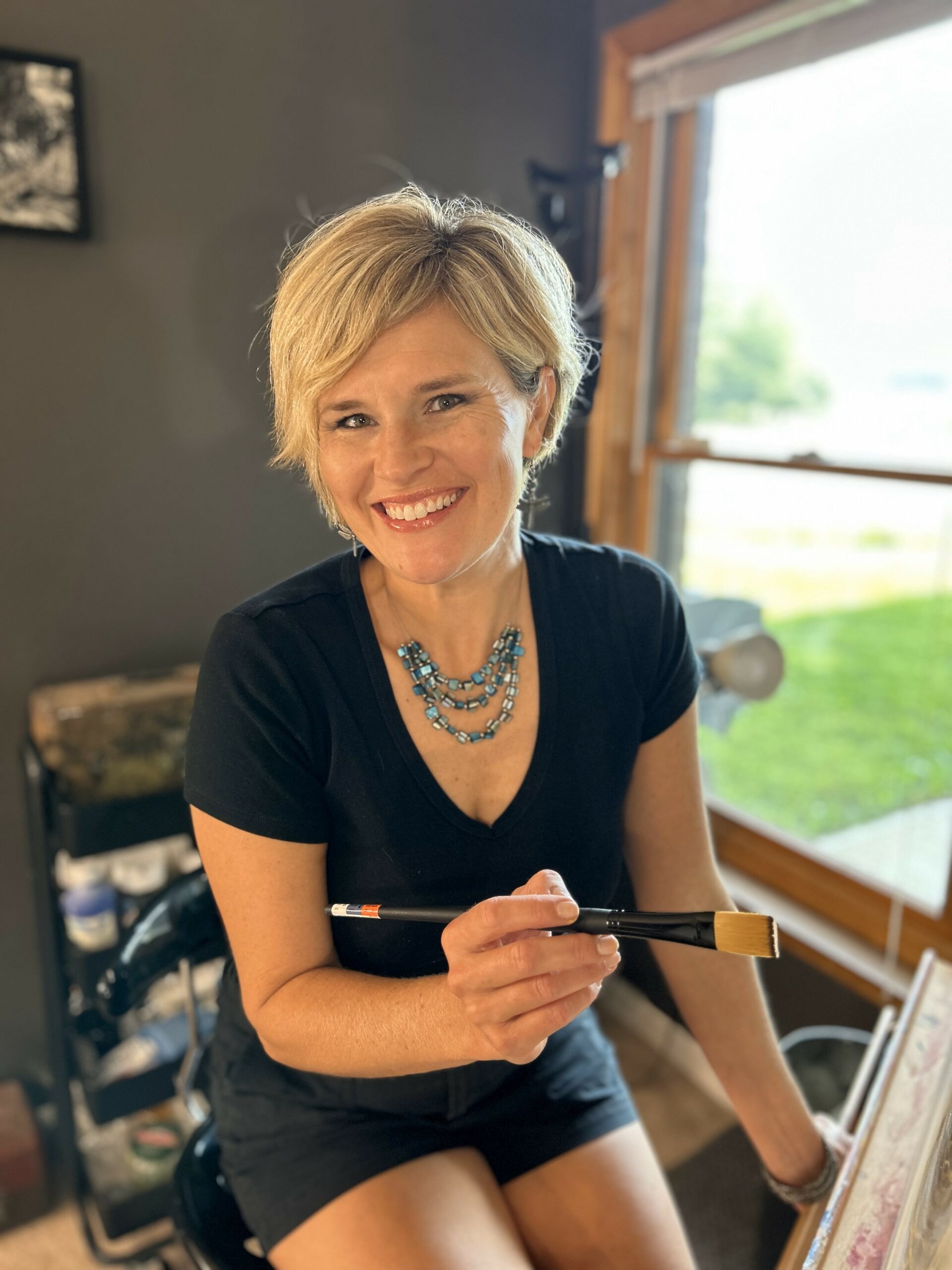 About Lindsey Kiser
About Lindsey Kiser
Lindsey Kiser is a contemporary visual artist, published children’s book illustrator, wife, and mother of two darling daughters.
Currently, ADC Fine Art represents and exhibits Lindsey Kiser’s work in their galleries in Cincinnati, Ohio and Ft. Thomas, Kentucky.
In October 2024, Summerfair Cincinnati, Inc. awarded Lindsey “Aid for Individual Artists Awards”. All six winners of this $5,000 grant will have the opportunity to exhibit together in the Summerfair Select Art Exhibition in the fall of 2025 at the Weston in Cincinnati, Ohio.
Also, in October 2024, Lindsey was inducted into Kentucky Crafted, a program of the Kentucky Arts Council, the state arts agency, which is supported by state tax dollars and federal funding from the National Endowment for the Arts. As a result, her work will be exhibited in a booth at The Market inside the Alltech Arena at the Kentucky Horse Park March 7-9, 2025.
In April 2024, Lindsey was nominated by the board of the Friends of the Boone County Arboretum to serve her local community as its inaugural Artist-in-Residence. Prints of her original oil painting, Silver Jubilee Blossoms, honoring the arboretum’s 25th anniversary are available for purchase here and here. (Twenty percent of the proceeds of sales of Silver Jubilee Blossoms until May 2, 2025, will be donated to the Friends of the Arboretum.)
In May 2022, Lindsey was nominated by the board of ComposeArts to be the organization’s inaugural Featured Visual Artist. In 2016, the governor of Kentucky appointed Lindsey to serve on the board of the Kentucky Arts Council on which she served until November 2022.
Since 2018, Lindsey’s artwork has been exhibited in numerous solo and juried group art shows, as far reaching as Laguna Beach and New York City. (See Exhibitions). So far, Lindsey has illustrated two published children’s books, The Royal Red Bird, written by Angela Rice, and A-Z for Me!, written by Mitzi Adams.
Kiser earned her undergraduate degree in fine art with minors in biology and chemistry from Georgetown College. She studied 19th Century British art history under the late Ilaria Bignamini, a curator for the Tate, and drawing at the Ruskin School of Drawing and Fine Art at the University of Oxford in Oxford, England. Buying into the myth of the starving artist, Lindsey earned her juris doctor (J.D.) at night from Salmon P. Chase College of Law at Northern Kentucky University, while, ironically, supporting herself by painting murals by day.
Lindsey’s art studio is in her home in Union, Kentucky in the Greater Cincinnati Metropolitan Area.



Artist’s Statement
In our electrified, pulsating world, full of endless options and others’ opinions, we are increasingly tuning out the beauty and opportunity that is quite literally right underfoot. A return to sensitivity to the smaller, “less important” objects of Nature is good medicine.
Intentionally rejuvenating our innate sense of wonder stimulates our minds to consider new thoughts about tired beliefs. As an added bonus, wonder feels incredible—like excited amazement. And it’s accessible. If we can’t get there on our own, Nature gives us ample opportunity to wonder. The wilderness is not required. A simple backyard will do.
Consider the common bird’s nest. Is it not fascinating that a bird knows how to build a nest? We usually consider the use of found objects as materials and tools as within the exclusive realm of man, and yet our common, but no less extraordinary, backyard songbirds know this. But, is it not even more fascinating that a bird knows it needs to build a nest? The bird knows its purpose. Interestingly, the purpose requires the bird to work until the task is accomplished no matter the quantity or severity of obstacles that are presented.
Consider the butterfly. For a caterpillar to become a butterfly, everything, except the caterpillar’s brain, liquifies inside the chrysalis. Are we willing to sacrifice what is good to build something great? Does it take one decision or a million? Is discomfort required? If so, is it worth it? If a caterpillar can change, surely, we can. After all, each of us is equipped with the world’s fastest supercomputer, the human brain.
Consider the great oak. Each mature oak produces thousands of acorns each year without any consideration regarding the success of any of them. The oak produces a staple at the base of the food chain. Yet, the only intention, if the oak could have one, would be to reproduce itself. As a byproduct of this purpose, the oak subsidizes the community. Likewise, when we actively seek great goals, the abundance-oriented mindset required for achievement produces abundance, economic and otherwise, that trickles down to the community at large.
Using simple backyard nature motifs as inspiration, I make art to instigate wonder and contemplation of long-held beliefs from new perspectives.

 About Lindsey Kiser
About Lindsey Kiser